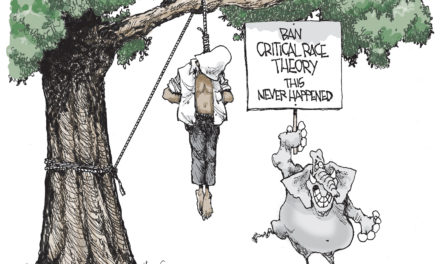Maybe City Slickers’ Curly was an economic development consultant, because it would be hard to come up with better advice for Memphis: “One thing. Just one thing. You stick to that and the rest don’t mean s—.”
Forget the 20-point economic development priorities and the multi-volume strategic plans for economic growth. It’s really only about one thing – getting the level of education in the Memphis region up to the national average.
Few things offer a bigger payoff – $3 billion.
Connecting The Dots
That’s because there is a direct line between our low educational attainment and our low per capita income. Of the 50 largest metros, we’re 44th in the percentage of 18-24 year-olds in college, so it’s no wonder that we’re 45th in per capita income.
As a result, the strategy for the future is the “economic benefit of being average,” according to economist Joe Cortright of Portland, Oregon. “Just getting Memphis to average is worth $3 billion in new wealth and new spending,” he said in a recent presentation to Leadership Memphis. “Sometimes, it’s demoralizing to grapple with how to move Memphis to the top tier of American metros. Just focus on getting it to the middle of the pack, because the economic impact of just doing that is huge.”
In a world where educational attainment is a proxy for a city’s success in the knowledge-based economy, it’s the presence of college-educated workers that determines if cities succeed today, because these workers are the magnets for more jobs, not the other way around.
The Raw Material
Because they aren’t here, Memphis is third from the bottom of the 50 metros in the percentage of creative professionals, and to compete in a high-skill economy of innovation and entrepreneurship, that’s got to change.
So, how does Memphis attract these talented workers? We don’t have to.
Memphis has the youngest population of the top 50 metros. “In the future, many cities will have to deal with shortages in the workforces as the Boomers retire,” Cortright said. “Memphis has a greater percentage of young people, so you will have the workers to avoid the problems that other cities have to face.”
Battle Of The Bulge
But, he said, and it’s a big but: “You have to educate them first and get more of them to graduate from college.”
Already, taxpayers in Memphis and Shelby County pay a $200 million annual surcharge for the bulge in school-age population and the status quo. The bulge largely accounts for Memphis’ high property tax rate when compared to Nashville, Knoxville, and Chattanooga, where the percentage of school age population is about 20 percent less.
It’s a point also made by Marlin Mosby, managing director of Public Financial Management and former Memphis chief financial officer, as part of his crusade to spread the word about how the combination of a regressive tax structure and the cost for so many students produces a greater financial burden on a proportionally smaller workforce, limiting our city’s ability to finance adequate public services.
Pressure Point
No one has seen the impact of these realities from more vantage points than Memphis Mayor Willie W. Herenton, and because of it, his presentation in support of his proposal to take the helm of Memphis City Schools has even greater import.
Disparaging of all that has taken place at the city district since he left the superintendent’s job in 1992 to run for city mayor, the pressure is on Herenton to make a compelling, persuasive case for improving the schools. After all, as Cortright pointed out, the future competitive position of Memphis depends on it.
Clearly, it won’t come easily, because the district’s three-year TCAP average for grades 3-8 is D+, more than 100 city schools are not now meeting state benchmarks (17 have not met them for six years in a row), and about 30,000 students are too old for their grades.
Facing Facts
That said, if Herenton does nothing but get the facts out about Memphis City Schools and dismantle the “all is well, stay the course” attitude of too many board members and administrators, it will have been enough.
It often seems that too many people at Memphis City Schools have been lulled to sleep by their satisfaction that Memphis City Schools is not on the state’s “high priority list” while the Nashville school district is. The fact that it has more to do with former superintendent Carol Johnson’s aptitude for using the arcane language of the state’s No Child Left Behind policies to keep the district off the list does little to temper their self-approval.
Meanwhile, comparisons convincingly show that the Nashville district is performing better than ours across the board. Because of Herenton’s bully pulpit, this misinformation is likely to change, and along the way, perhaps it will become increasingly clear that our entire economic development agenda is really “just one thing.”
*This post was previously published as the City Journal column in the May Memphis magazine.



